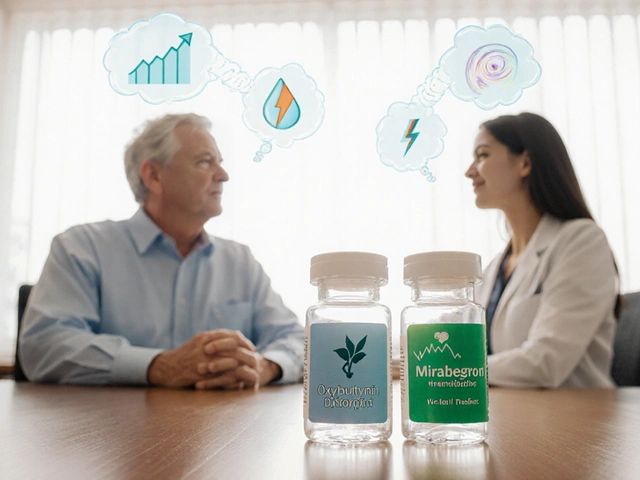Best Albuterol Alternatives During Inhaler Shortages: Emergency Tips & Safe Solutions

Empty pharmacy shelves are way more than just a headache—they’re terrifying if you or your kid rely on Albuterol. Ask any parent whose child started wheezing at the exact moment the inhaler runs dry. There’s little time to panic and even less room for error. These shortages aren’t just a blip on the radar: by mid-2024, at least 44% of US pharmacies reported trouble stocking popular rescue inhalers. And it’s not just the big brands like ProAir and Ventolin; even generics are vanishing faster than you can say “refill.”
Why Albuterol Shortages Happen and Who is at Risk
There’s no single culprit behind Albuterol shortages. Sometimes it’s a supply chain glitch—the pandemic didn’t help, but hurricanes, manufacturing delays, or sterilization issues often make things worse. All that means normal folks, from tweens heading to soccer practice to retirees with COPD, can suddenly find the pharmacy shelf empty. In 2023, the FDA listed over a dozen albuterol products in short supply, many with no clear restock date. And pharmacies in rural areas? They’re hit even harder, with fewer options to juggle when something’s missing.
If you’re thinking, "Okay, but who’s actually at risk?"—here’s the reality. People with moderate to severe asthma, especially kids, need that quick-relief inhaler ready at hand for sudden symptoms. Skipping or delaying a dose isn’t just uncomfortable—it can genuinely turn dangerous. First-time attacks are scary, yes, but it’s the regulars, folks who know exactly how bad their wheezing can get, who feel the lack most urgently.
Knowing what puts you at risk for urgent attacks is crucial. Exercise-induced asthma, allergies, cold air, viral infections—any of these can trigger trouble. And with allergies spiking thanks to wild weather and longer pollen seasons, the need for reliable rescue medication is only going up.

What Can I Use If Albuterol Is Out of Stock? Smart Alternatives and Creative Workarounds
Alright—what if your pharmacy’s out of Albuterol? First, breathe. Not literally (if you’re gasping, seek medical help!), but take a second to regroup. Here’s what works in real life, not just a textbook.
There are other inhalers and medications that can step in for Albuterol. Short-acting beta-agonists (SABAs) are the go-to category—Albuterol sits here, but it’s not the only player. Levalbuterol, known by the brand name Xopenex, works for a lot of people with fewer jitters and a similar rapid effect. Levalbuterol shortages sometimes happen too, but it’s worth checking with your pharmacist.
If you want a quick side-by-side on these choices, check out this hand-picked chart below:
| Medication | Type | How Fast It Works | Prescription Needed? |
|---|---|---|---|
| Albuterol (Ventolin, ProAir, Proventil) | SABA | 2-5 minutes | Yes |
| Levalbuterol (Xopenex) | SABA | 2-5 minutes | Yes |
| Terbutaline | SABA (injection or tablets) | 5-30 minutes | Yes |
| Epinephrine (Primatene Mist) | Non-selective | Within minutes | No (over the counter) |
| Ipratropium (Atrovent) | Anticholinergic | 15-30 minutes | Yes |
Primatene Mist—the old-school OTC inhaler—is sometimes controversial. It uses epinephrine, which is less targeted than Albuterol and can cause more jitteriness or heart pounding. However, for adults (not kids!) without heart problems, it may be a fallback in a pinch. And yes, you can buy it without a prescription.
Inhaled anticholinergics like Atrovent (ipratropium bromide) aren’t quite as fast as Albuterol but help open up airways by a different route. These are especially useful for folks with COPD or mixed asthma/COPD, but they aren’t the #1 choice for severe, sudden asthma attacks in kids.
Oral medications—like tablets containing terbutaline or even prednisolone (a steroid)—are an option if you have nothing else, but they take longer to work (think 30 minutes to hours). Steroids don’t provide quick relief but can dial back inflammation over time or during a severe flare, especially for persistent symptoms.
Some folks ask about using expired inhalers when nothing else is on hand. Here’s the deal: the medicine may lose strength over time, but an expired albuterol inhaler is usually better than nothing if you’re wheezing seriously. Watch out for blocked nozzles or leaky canisters. Relying on them long-term is a terrible idea, but in an emergency, they might help you get through.
If you want a detailed breakdown of the pros, cons, and right-now availability for each option, there’s a helpful resource on what can I use instead of Albuterol that’s super practical.
Avoid the temptation to borrow a friend’s inhaler or use leftover antibiotics—neither is safe or effective, and you’re risking weird side effects or masking a bigger problem. If you truly can’t find an inhaler, head to urgent care or the ER sooner rather than later. They can give you a breathing treatment (nebulizer) with albuterol or even a shot of epinephrine if things are really bad.

Building an Emergency Asthma Action Plan: Stay Ready, Not Scared
Here’s the truth: these shortages aren’t disappearing overnight. So making an asthma action plan is honestly the best investment you can make for yourself or your family. I put this into practice at home—my kid Ted knows exactly what to do if he feels his chest tightening and his main inhaler’s missing.
First up, chat with your healthcare provider now (not later!). Ask about back-up prescriptions. You may be able to get a different SABA, or a duplicate inhaler for school or travel. Ask if it makes sense to try an add-on daily medication—like a low-dose inhaled steroid—to cut down on flare-ups and make you less reliant on rescue inhalers.
A good plan means having a list like this on hand for anyone in your household who needs inhalers:
- The names of your usual inhalers and when you use them (rescue vs. daily control)
- Exact steps to take if symptoms start or get worse
- Clear signs of an emergency: trouble speaking in full sentences, blue lips, pulling in of skin between ribs, etc.
- Where to keep all inhalers so they’re easy to grab (not buried in a junk drawer!)
- Your pharmacy’s phone number and a backup pharmacy nearby
Don’t forget to check every inhaler at least once a month. Is the dose counter right? Is the mouthpiece gross? Replace anything out of date, or at least move it to “emergency-only” instead of regular use.
One trick we use at home: teach your kid or partner to recognize early warning signs. For Ted, it’s a weird cough after running, so he knows to slow down and check in before it becomes a full-blown attack. That’s ten times easier than hunting for a pharmacy with restocked shelves when he can barely breathe.
Stock up on a few non-medicine helpers, too: saline nasal spray (helps clear trigger pollen), a spacers or holding chamber (makes any metered-dose inhaler work better), and clean peak flow meter (so you know if symptoms are creeping up before you really feel short of breath). Peak flow readings are like an early alert system, especially for folks who can’t always sense subtle breathing changes—handy for kids, older adults, or anyone who “toughs it out” too long.
If you travel or camp, stash a back-up inhaler in your car or backpack. If you rely on mail order or online pharmacies, set refill reminders ahead of time—just don’t use sketchy sources without a prescription. Legitimate online pharmacies require a doctor’s note. Double-check reviews and pharmacy licenses through the NABP or FDA.
Shortages are frustrating, and they hit hardest when you’re unprepared. But it’s not hopeless. With a bit of planning and a few smart substitutions, you can stay ahead of the curve. The important part is knowing your options, having honest conversations with your doctor or pharmacist, and not hesitating to get help if you feel symptoms spinning out of control. Your life—your kid’s life—depends on it.







Hey friends, if you ever find yourself staring at an empty shelf, grab a spacer and a rescue plan – it can make the difference between panic and control 😊. Keep a backup inhaler in your car or bag, and make sure everyone in the house knows where it lives. A quick check of the dose counter each month saves a lot of stress later. Remember, you’re not alone in this, we’ve got each other's backs! 🌟
It’s funny how we chase certainty in a world of shifting supply chains, yet the breath we need stays the same 🌿. While the market wrestles, keep a calm mindset and think about the alternatives like levalbuterol or even a well‑kept Primatene Mist for adults. Small steps, like a weekly inhaler inventory, can turn chaos into routine 😌.
When the pharmacy shelf is bare, the first thing to verify is whether you have a valid prescription for another short‑acting beta‑agonist such as levalbuterol; many pharmacies can fill that without delay. Check with your pharmacist about a duplicate prescription for an inhaler you already use, as many insurance plans allow a backup. If you have a partner or school nurse, ask them to keep a spare inhaler labeled with your name and dosage. Keep a non‑prescription epinephrine inhaler like Primatene Mist only for adult use and only if you have no heart conditions. For those with COPD, consider adding an anticholinergic inhaler like ipratropium, which can provide complementary bronchodilation. In emergencies, a nebulized treatment in urgent care can deliver albuterol directly to the lungs, bypassing the need for a metered‑dose inhaler. Remember to check the expiration date; even an expired inhaler can provide some relief, but a blocked nozzle can render it useless. If you ever need to use an oral tablet like terbutaline, know that onset may take up to 30 minutes, so it’s not a substitute for immediate relief. Steroids such as prednisolone won’t open airways instantly, but they reduce inflammation over several hours and can prevent a worsening attack. An action plan should list the exact steps: recognize early wheeze, use rescue inhaler, reassess after two minutes, then seek medical help if symptoms persist. Keep a written copy of your plan in a visible spot, like on the fridge, and review it with your family regularly. Stock a spacer or holding chamber; it improves drug delivery by up to 40 % for most metered‑dose inhalers. Use a peak flow meter weekly to catch subtle declines before a full‑blown attack occurs. If you travel, pack a small travel‑size inhaler in your luggage and another in your car, and set reminder alerts for refills a month ahead of time. Online pharmacies can be convenient, but verify they are certified through the NABP or FDA before ordering. Finally, if you ever feel your inhaler supply is dwindling, call your pharmacy today; many can hold a stock or arrange a transfer before you run out.
Yo, the good news is you’ve got options that don’t require a PhD to understand. Levalbuterol feels smoother, Primatene Mist is over‑the‑counter for grown‑ups, and ipratropium can be a side‑kick for COPD folks. Just remember, the faster the med hits, the better – so keep that spacer handy. And if you ever have to grab a tablet, give yourself a few minutes before you panic.
Quick tip: always verify the inhaler mouthpiece is clean before each use; a blocked nozzle can feel like the med isn’t working 😅. Also, keep a small notebook with pharmacy numbers and backup locations – it saves a frantic search later.
Listen, the drama of an empty shelf is real, but let’s not get sloppy with grammar while we’re at it. Your rescue plan should be as precise as a punctuation mark – clear, concise, and correct. If you’re tempted to improvise with random meds, halt that nonsense; you’ll thank yourself when the inhaler finally arrives. And yes, the short‑acting beta‑agonists are the stars here, not some makeshift concoction.
From a pragmatic standpoint, the market dynamics are a perfect illustration of supply chain inefficiencies; one must therefore adopt a mitigation strategy rooted in redundancy. Utilizing jargon such as “pharmacoeconomic constraints” underscores the gravity of the situation. It is imperative to eschew anecdotal remedies and adhere strictly to evidence‑based alternatives.
Friends, imagine the relief when you know exactly where the backup inhaler lives – that’s peace of mind! I always keep an extra one in the kitchen drawer and another in the car’s glove compartment. Let’s all share our organization hacks so nobody gets caught off guard when the pharmacy runs dry. Together we can turn anxiety into confidence! 🌈
It is evident that the current scarcity of albuterol inhalers warrants a comprehensive reevaluation of procurement protocols. One must consider the ramifications of such shortages on public health while maintaining a decorous tone. In light of these observations, I recommend the establishment of diversified supply channels to mitigate future deficits.
Sure the shortage is real but you can’t trust the mainstream narrative that they’re just “technical glitches” there’s always a hidden agenda at play
Wow!!! This whole situation is a perfect storm of supply chain missteps, regulatory delays, and consumer panic!!! Remember, keep a spacer, track your meds, and don’t hesitate to call your pharmacist for a backup-this can literally be the difference between a manageable flare‑up and a full‑blown emergency!!!
From a clinical perspective, having a backup inhaler reduces the risk of exacerbations; ensure the device is stored in a temperature‑stable environment to maintain efficacy.
just grab a spare inhaler before you run out.
yeah i hear u, having that extra inhaler in the car is a lifesaver, make sure you check the expiry date too.
Stay hopeful! A little planning today means breathing easy tomorrow, and that’s a win for everyone.
Note: always follow prescribed dosage; deviation can jeopardize health and undermine treatment efficacy.
Honestly, the media loves to hype up these shortages, but the real solution is personal preparedness 🌟. Keep that backup handy and you’ll outsmart the panic.